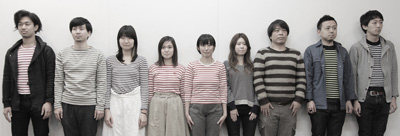- ExhibitionsTOTO GALLERY·MA
- Upcoming Exhibitions
- Past Exhibitions
- ExhibitionsExternal Locations
- Current Exhibitions
- Upcoming Exhibitions
- Past Exhibitions
- Lectures
- Upcoming Lectures
- Past Lectures
- Visitor Information
- Directions
- Gallery Infomation
- Museum Shop
- Bookshop TOTO
Cultural Activities
TOTO GALLERY·MA
TOTO Publishing
Bookshop TOTO

About the Exhibitor
Message from the Exhibitor
Learning from "little spaces"
I have continued to photograph "little spaces" together with my students and staff for over half a year. We all took photographs of any scenes in the landscape that caught our mind, and we gathered them together almost weekly to sort them into categories. While "caught our mind" may seem like a vague expression to use, I have done so through conjecturing that we judge the appeal of spaces through such instinctive leanings of our feelings that cannot be described with words.
We ended up with a vast amount of photographs. All of the photographs are of scenes that you can really appreciate why they had caught the minds of their photographers. They are full of appealing qualities that draw viewers in, and they show such a richness of expression that make you want to personify them. However, the subjects of the photographs vary widely, so it was not easy to identify the common factor that runs through them. In the end, what we drew from them is the word "service". We figured that there might be something that we can learn by borrowing this term from the field of ecology and using it for evaluating the scenes in the photographs.
The many landscape images displayed in this exhibition present points of view through which the various expressions of the services generated by these spaces can be appreciated, and we share our observations that we have drawn from them. Based on the hypothesis that we receive services within space on various dimensions (e.g. natural services, artificial services, chance services, humorous services, etc.) while reading their qualities through their expressions, we aim to continue to think about a way of valuing spaces and architecture that transcends the distinction made between whether they have been "lived in" or "planned".
I have continued to photograph "little spaces" together with my students and staff for over half a year. We all took photographs of any scenes in the landscape that caught our mind, and we gathered them together almost weekly to sort them into categories. While "caught our mind" may seem like a vague expression to use, I have done so through conjecturing that we judge the appeal of spaces through such instinctive leanings of our feelings that cannot be described with words.
We ended up with a vast amount of photographs. All of the photographs are of scenes that you can really appreciate why they had caught the minds of their photographers. They are full of appealing qualities that draw viewers in, and they show such a richness of expression that make you want to personify them. However, the subjects of the photographs vary widely, so it was not easy to identify the common factor that runs through them. In the end, what we drew from them is the word "service". We figured that there might be something that we can learn by borrowing this term from the field of ecology and using it for evaluating the scenes in the photographs.
The many landscape images displayed in this exhibition present points of view through which the various expressions of the services generated by these spaces can be appreciated, and we share our observations that we have drawn from them. Based on the hypothesis that we receive services within space on various dimensions (e.g. natural services, artificial services, chance services, humorous services, etc.) while reading their qualities through their expressions, we aim to continue to think about a way of valuing spaces and architecture that transcends the distinction made between whether they have been "lived in" or "planned".
Kumiko Inui
Profile

Member: Tokyo University of the Arts Inui Lab / Office of Kumiko Inui
(from left) Taiki Yoshino, Yuya Miyazaki, Natsuko Morita, Yuki Shimooka, Kumiko Inui, Haruka Nogami, Tetsuo Nishizawa, Yasuaki Morinaka, Ippei Tanida
(from left) Taiki Yoshino, Yuya Miyazaki, Natsuko Morita, Yuki Shimooka, Kumiko Inui, Haruka Nogami, Tetsuo Nishizawa, Yasuaki Morinaka, Ippei Tanida
INUI KUMIKO
Born in Osaka in 1969. Graduated from Tokyo University of the Arts, Faculty of Fine Arts, Department of Architecture in 1992. Completed the master's program of the Yale School of Architecture in 1996. Worked at Jun Aoki & Associates from 1996 to 2000. Established Office of Kumiko Inui in 2000. Associate professor at Tokyo University of the Arts from 2011. Representative works include Dior Ginza (2004), Apartment I (2007), Flower Shop H (2009), KYOAI COMMONS (2011). Currently working on elementary and middle school projects in the Tohoku region and a community development project in Nobeoka, Miyazaki.
Born in Osaka in 1969. Graduated from Tokyo University of the Arts, Faculty of Fine Arts, Department of Architecture in 1992. Completed the master's program of the Yale School of Architecture in 1996. Worked at Jun Aoki & Associates from 1996 to 2000. Established Office of Kumiko Inui in 2000. Associate professor at Tokyo University of the Arts from 2011. Representative works include Dior Ginza (2004), Apartment I (2007), Flower Shop H (2009), KYOAI COMMONS (2011). Currently working on elementary and middle school projects in the Tohoku region and a community development project in Nobeoka, Miyazaki.
Copyright © TOTO LTD. All Rights Reserved.







